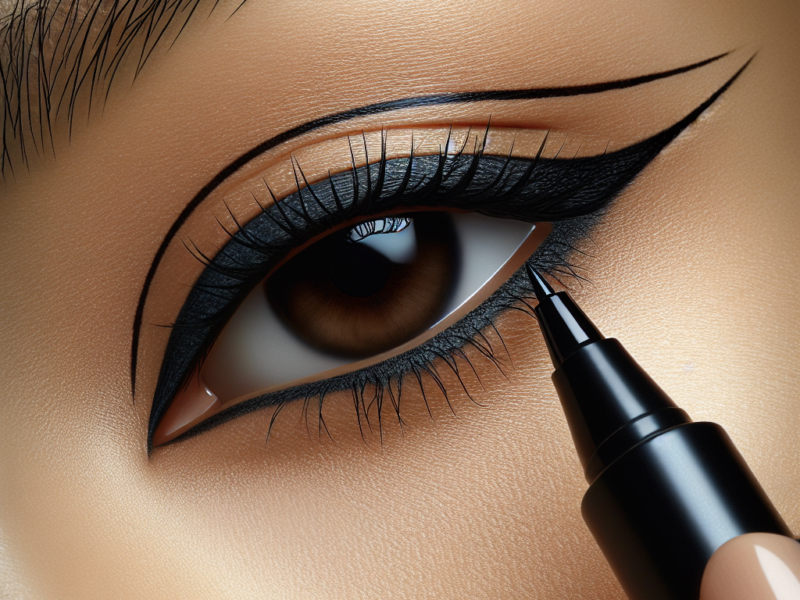Are you tired of struggling to achieve a smooth and even skin tone? Look no further! In this article, we will guide you through the art of color correction and show you how to effortlessly enhance your complexion. Say goodbye to blemishes, redness, and discoloration – with our easy-to-follow tips and techniques, you’ll be able to achieve a flawless finish in no time. So grab your makeup brushes and get ready to transform your skin into a radiant masterpiece!
Check here to see how this cup of morning coffee will bright your whole day!!
Understanding Color Correcting
Color correcting is a makeup technique that involves using specific colors to neutralize or balance out skin imperfections, such as redness, dark spots, and discoloration. It is a crucial step in achieving an even skin tone and creating a flawless base for your makeup.
What is color correction?
Color correction is the process of using different colors, known as color correctors, to counteract specific skin concerns. These color correctors come in a range of shades and undertones, each designed to target and neutralize particular issues.
Why is color correction important for even skin tone?
Color correction helps to create a more balanced complexion by addressing specific problem areas. By neutralizing the unwanted undertones or colors in your skin, color correctors can help you achieve a more even and flawless appearance. This, in turn, allows your foundation and concealer to work more effectively, resulting in a smoother and more natural-looking complexion.
Determining Your Skin Tone
Before diving into the world of color correcting, it is essential to determine your skin tone and undertone. This information will help you choose the correct color correctors that will complement your complexion perfectly.
Identifying your undertone
The undertone of your skin is the underlying hue that determines how your skin appears overall. There are three main undertones: cool, warm, and neutral. To identify your undertone, you can examine the veins on your wrist.
If your veins appear blue or purple, you likely have a cool undertone. If they look greenish, you have a warm undertone. And if you have difficulty determining whether your veins are more blue or green, you likely have a neutral undertone. Understanding your undertone will guide you in selecting the appropriate color correcting products.
Finding your correct shade
Once you have identified your undertone, it’s time to find the correct shade of color corrector. Color correctors are available in various shades, each corresponding to a particular issue or concern. Here are some general guidelines to help you select the right shade:
- Green color correctors help neutralize redness.
- Peach or orange color correctors counteract dark circles and blue undertones.
- Lavender or lilac color correctors brighten sallow or yellowish skin.
- Yellow color correctors help balance purple or blue undertones.
Remember, it’s crucial to choose a color corrector shade that is slightly lighter than your foundation to prevent any ashy or unnatural-looking results.
Choosing the Right Color Corrector
To effectively color correct your skin, it’s essential to understand the color wheel and how different shades interact with each other.
Understanding the color wheel
The color wheel is a useful tool that helps determine which colors are opposite each other, known as complementary colors. When it comes to color correction, using a complementary color helps neutralize or cancel out the unwanted undertones on your skin.
For example, green is opposite red on the color wheel. Therefore, using a green color corrector can help counteract any redness or acne scars. Similarly, purple is opposite yellow on the wheel, making it ideal for brightening sallow or dull complexions.
Matching color correctors to skin concerns
Different skin concerns require different color correctors. Here are some common skin concerns and the corresponding color correctors to address them:
- Redness: Green color correctors
- Dark circles or bluish undertones: Peach or orange color correctors
- Dull or sallow skin: Lavender or lilac color correctors
- Hyperpigmentation: Peach, orange, or yellow color correctors, depending on the depth and intensity of the pigmentation
By understanding the color wheel and matching the appropriate color corrector to your specific concerns, you can effectively balance out your skin tone.
Prepping the Skin
Before diving into the color correction process, it is crucial to properly prepare your skin to achieve the best results.
Cleansing and moisturizing
Begin by cleansing your face with a gentle cleanser to remove any dirt, oil, or makeup residue. Follow up with a moisturizer that suits your skin type to ensure your skin is hydrated and primed for makeup application. Clean and moisturized skin provides a smooth canvas for color correctors and helps them blend seamlessly.
Applying primer
After moisturizing, apply a primer that suits your skin concerns. Primers can help smooth out the texture of your skin, minimize the appearance of pores, and prolong the wear of your makeup. Choose a primer that complements your skin type (e.g., mattifying for oily skin, hydrating for dry skin) for optimal results.
Color Correction Techniques
Now that your skin is prepped, it’s time to learn some color correction techniques to address specific concerns.
Color correcting blemishes and redness
To color correct blemishes and redness, start by applying a green color corrector to the affected areas using a small brush or your fingertips. Gently blend the corrector into your skin until the redness is visibly reduced. Be careful not to apply too much product, as it can interfere with your foundation’s coverage.
Once the corrector is blended, apply your regular concealer or foundation on top to further even out the skin tone. Pat the concealer or foundation onto the corrected areas using a sponge or brush, ensuring a seamless blend.
Color correcting hyperpigmentation
If you are dealing with hyperpigmentation or dark spots, color correcting can help minimize their appearance. Use a peach, orange, or yellow color corrector, depending on the depth and intensity of the pigmentation.
Apply the corrector directly onto the hyperpigmented areas and gently blend it in using a brush or your fingertips. Make sure to blend the edges well to avoid any harsh lines. Follow up with concealer and foundation to achieve an even complexion.
Concealing and Foundation
After color correcting, it’s time to conceal any remaining imperfections and even out your skin tone further.
Choosing the right concealer
Select a concealer that matches your skin tone or is slightly lighter. The concealer should have a creamy consistency that provides sufficient coverage without feeling heavy on the skin. You can opt for a liquid concealer for a natural finish or a cream concealer for more coverage.
Applying foundation
To create an even and flawless base, apply foundation after concealing. Choose a foundation that matches your skin tone and undertone. Start by applying a small amount of foundation to the center of your face and blend it outwards using a brush, sponge, or your fingertips. Make sure to blend thoroughly, paying attention to the jawline and hairline for a seamless finish.
Blending and Setting
To ensure a long-lasting and seamless color correction, proper blending and setting techniques are essential.
Blending color corrector and concealer
After applying the color corrector and concealer, blend them seamlessly into your skin using a brush, sponge, or your fingertips. Take your time to blend the products thoroughly, ensuring there are no harsh lines or visible color corrector.
Setting with powder
To prevent your color correction from fading or transferring throughout the day, set your makeup with a translucent or colorless powder. Lightly dust the powder over your entire face, focusing on the areas where you applied the color corrector and concealer. This step will help lock in the products and provide a more long-lasting finish.
Additional Tips
Here are some additional tips and tricks to enhance your color correction technique:
Using color correctors for dark circles
If you have dark circles under your eyes, using a peach or orange color corrector can help neutralize the bluish undertones. Apply the corrector to the under-eye area and gently blend it before applying your concealer. This technique will brighten up the under-eye area and make you look more refreshed and awake.
Avoiding common mistakes
When color correcting, it’s important not to overdo it. Applying too much color corrector can result in an unnatural or cakey appearance. Start with a small amount and build up as needed. Additionally, remember to blend the products thoroughly to achieve a seamless finish.
Skin Care Routine
Incorporating color correctors into your skincare routine can provide additional benefits and improve the overall appearance of your skin.
Including color correctors in your skincare
Some skincare products, such as moisturizers and serums, now come with color correcting properties. By using these products regularly, you can address specific skin concerns while nourishing and hydrating your skin.
Removing color correctors properly
At the end of the day, it is crucial to remove all traces of makeup, including color correctors, to allow your skin to breathe and regenerate overnight. Use a gentle makeup remover or cleansing oil to cleanse your face thoroughly. Follow up with your regular skincare routine to keep your skin healthy and radiant.
Achieving an Even Skin Tone
Achieving and maintaining an even skin tone requires consistency and embracing your individuality.
Maintaining a consistent routine
To ensure long-term results, it is essential to stick to a consistent skincare and makeup routine. Regularly cleanse, moisturize, and use color correctors to address your specific skin concerns. Consistency will help you achieve and maintain a more even and radiant complexion.
Accepting and embracing individuality
While color correcting can help improve the appearance of the skin, it is important to embrace and celebrate our individuality. No one has perfect skin, and it’s essential to remember that imperfections are what make us unique. Color correcting should enhance our natural beauty and confidence, not mask or change who we are.
In conclusion, color correction is a valuable technique for achieving an even skin tone and addressing specific skin concerns. By understanding your skin tone, choosing the right color correctors, and following proper application techniques, you can create a flawless base for your makeup. Remember to take care of your skin, embrace your individuality, and have fun experimenting with color correction to enhance your natural beauty.




